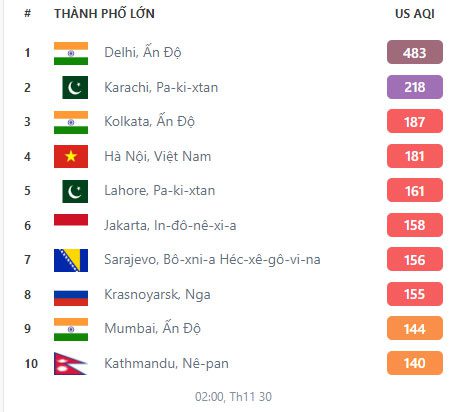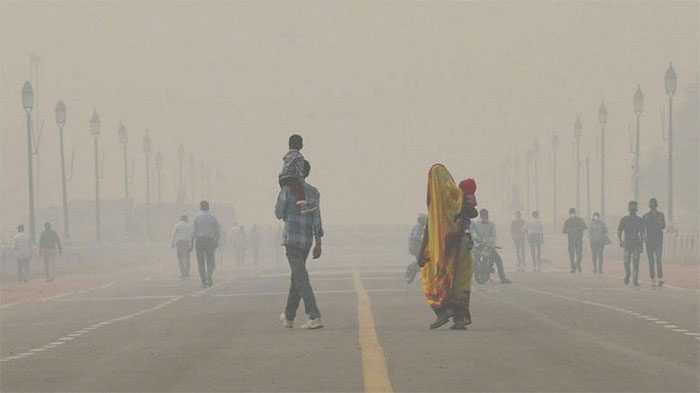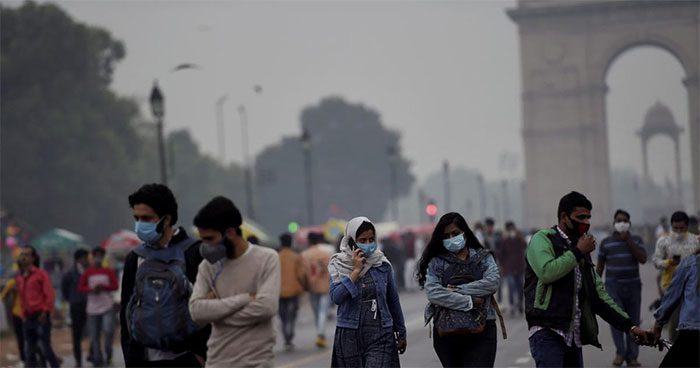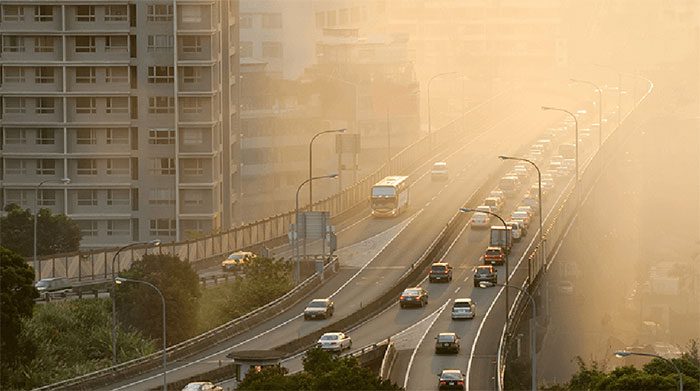As of 2:00 PM today, November 30, the air quality monitoring application IQAir reported that the air quality in Hanoi is predominantly at a very poor level, ranking fourth in the world with an AQI index of 181. Although it has decreased by one level since noon, this is still considered unhealthy for humans.

On the afternoon of November 30, the IQAir air quality monitoring application reported that New Delhi, the capital of India, is the most polluted city in the world. (Photo: IQAir)
According to this ranking, Delhi – the capital of India has surged to the first position (previously second at noon) with the highest harmful index on the scale, at 483. New Delhi, a part of Delhi and the capital of India, also has the highest AQI in the rankings of regions with the worst air quality, at 221. The concentration of harmful PM 2.5 particles, with a diameter of less than 2.5 microns, which can be lethal, recorded in New Delhi on the afternoon of November 30 was 95 times higher than the annual air quality guidelines set by the World Health Organization (WHO).

According to this year’s air quality life index compiled by the Energy Policy Institute at the University of Chicago, the lives of Delhi residents could be shortened by 11.9 years due to the extremely poor air quality. (Photo: Vox)
India Today reports that data from the Central Pollution Control Board (CPCB) indicates that the air quality in New Delhi has consistently been at a severe level for many consecutive days since early November this year. In contrast, during the same period last year, New Delhi recorded only 3 days of severe air quality. Previously, in November 2021, the city endured 12 days of living in poor air quality.
According to The Government Newspaper, New Delhi, the capital of the Republic of India, is located in Northern India, built on the right bank of the Yamuna River, near the foothills of the Aravali Range, at an altitude of 216 meters.
Situated at the intersection of the largest transportation routes in the region, and in an area historically regarded as a rice bowl since ancient times, New Delhi holds significant geographical and economic importance, as well as a substantial historical role on the Indian subcontinent. The history of the Delhi region dates back to the “Heroic Age”, over 3,000 years ago.

The air quality in New Delhi has remained consistently severe for many consecutive days since the beginning of November this year. (Photo: Vox)
The Guardian reports that New Delhi is home to over 20 million people and is frequently ranked as the most polluted city in the world. According to this year’s air quality life index compiled by the Energy Policy Institute at the University of Chicago, the lives of Delhi residents could be shortened by 11.9 years due to the extremely poor air quality.
Research results from a joint project of the New Delhi government and the Indian Institute of Technology (IIT) – Kanpur indicate that the burning of crop residue is the leading cause of air pollution in New Delhi. Agricultural waste burning is contributing between 31% to 51% to the city’s air pollution recently. Other contributing factors include construction dust, vehicle emissions, etc.

The burning of crop residue, construction dust, vehicle emissions, etc., are factors affecting the air quality in New Delhi. (Photo: Vox)
Mr. Gopal Rai, head of the New Delhi Environmental Agency, told AP in an interview on November 8 that the local government will attempt to induce artificial rain through cloud seeding in November in an effort to combat air pollution in the city.
This plan includes releasing salt or silver iodide into clouds from aircraft to promote rain formation. Indian scientists hope that the amount of rain generated will help remove pollution from the air.
According to news from Vinmec, AQI (Air Quality Index) is a daily report of air quality. It is considered a simplified measure of air pollution levels, indicating whether the air around us is clean or polluted, and to what extent. The risk to public health increases with higher AQI values. The AQI focuses on the health impacts that individuals may experience within hours or days after breathing polluted air.
The EPA (U.S. Environmental Protection Agency) calculates the AQI based on five primary air pollution parameters: Ground ozone, particulate matter (PM 2.5 and PM 10), Carbon monoxide (CO), Sulfur dioxide (SO2), and Nitrogen dioxide (NO2).



















































